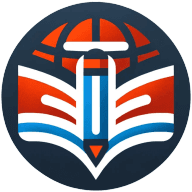7 Ways Public Schools Are Adapting to Changing Student Demographics
Public schools across the nation are undergoing a significant transformation to meet the needs of an increasingly diverse student population. This article explores innovative strategies that educational institutions are implementing to create more inclusive and effective learning environments. Drawing on insights from leading experts in education, we'll examine seven key areas where schools are making impactful changes to better serve their evolving student demographics.
- Multilingual Tools Foster Inclusive Learning Environments
- Visual-First Instruction Enhances Safety and Efficiency
- Diverse Curriculum Broadens Students' Worldviews
- Flexible Scheduling Respects Religious Observances
- Translation Services Strengthen Parent-Teacher Communication
- Peer Mentorship Programs Support Newcomer Students
- Specialized Support Systems Aid Refugee Integration
Multilingual Tools Foster Inclusive Learning Environments
Our district integrated multilingual digital learning tools to support a growing population of students whose first language is not English. Platforms like interactive language apps and bilingual ClearDigital panels allow students to access lessons, collaborate, and complete assignments in both English and their native languages. This adaptation has enriched the educational experience by fostering inclusive classrooms where all students can participate fully, reducing language barriers that previously hindered engagement. Teachers can differentiate instruction more effectively, pairing students for peer learning while promoting cultural awareness across the classroom. As a result, students not only gain academic skills but also develop empathy, cross-cultural communication, and collaboration skills, creating a more connected and supportive learning environment for everyone.

Visual-First Instruction Enhances Safety and Efficiency
Dealing with changes in the local population is just a fact of doing business in Houston. The most impactful way the local trade schools have adapted to changing demographics is by implementing bilingual, visual-first technical instruction for core skills and safety.
The problem was that the old training method was purely verbal and in English, which was inefficient and dangerous for new students who spoke Spanish. The adaptation was translating all critical safety manuals and technical procedural diagrams into Spanish. They stopped relying on complex written text for instruction and started using universally clear visual aids.
This change enriched the learning experience for all students. By relying on clear diagrams and numbers—the universal language of construction—the training became faster and more effective for everyone. The new visual standard improved comprehension, even for native English speakers, because diagrams are easier to reference on a loud job site than a long paragraph of text.
The key lesson is that adapting for one group often improves the entire system. My advice is to stop seeing simple communication as a luxury. Invest in clear, visual instruction for your crew, because that level of clarity is not just "inclusive"—it's mandatory for achieving zero mistakes and maximum safety.
Diverse Curriculum Broadens Students' Worldviews
Public schools are adapting to changing student demographics by offering culturally diverse curriculum across all subjects. This approach ensures that students from various backgrounds see themselves represented in their learning materials. By incorporating diverse perspectives, histories, and cultural contributions into subjects like literature, history, and social studies, schools create a more inclusive learning environment.
This not only helps students feel more connected to their education but also broadens the worldview of all learners. Teachers are being trained to deliver this curriculum effectively, fostering a deeper understanding and appreciation of different cultures. To support this initiative, schools should actively seek input from diverse communities to continually improve and expand their curriculum offerings.
Flexible Scheduling Respects Religious Observances
Implementing flexible scheduling for religious observances is another way public schools are accommodating changing student demographics. Schools are recognizing the importance of respecting various religious holidays and practices. By allowing students to take time off for their religious observances without academic penalties, schools demonstrate inclusivity and respect for diverse beliefs.
This flexibility extends to rescheduling important events or exams that may conflict with significant religious dates. Such accommodations help create a more welcoming environment for students of all faiths. Schools should consider developing interfaith calendars and educating staff about different religious practices to better support this initiative.
Translation Services Strengthen Parent-Teacher Communication
Public schools are bridging communication gaps by providing translation services for parent-teacher interactions. This crucial step ensures that parents who are not fluent in the primary language of instruction can still actively participate in their child's education. Schools are employing professional translators, utilizing translation software, and creating multilingual documents to facilitate clear communication.
This approach helps to build stronger relationships between educators and families from diverse linguistic backgrounds. By breaking down language barriers, schools can better involve all parents in their children's academic progress and school activities. Educational institutions should prioritize expanding these translation services to cover as many languages as possible within their community.
Peer Mentorship Programs Support Newcomer Students
The introduction of peer mentorship programs for newcomer students is a innovative way public schools are supporting changing demographics. These programs pair newly arrived students with peers who can help them navigate the school system and social environment. Mentors assist newcomers in understanding school customs, making friends, and feeling more comfortable in their new surroundings.
This peer-to-peer support system helps reduce feelings of isolation and promotes cultural exchange among students. By fostering these connections, schools create a more welcoming and inclusive atmosphere for all students. Educational institutions should consider implementing or expanding such mentorship programs to ease the transition for newcomer students.
Specialized Support Systems Aid Refugee Integration
Public schools are establishing specialized support systems for refugee students to address their unique needs. These programs often include trauma-informed teaching practices, additional language support, and access to mental health resources. Schools are training staff to understand the challenges refugee students may face, such as interrupted education or the effects of displacement.
By providing targeted assistance, schools help refugee students integrate into their new educational environment more effectively. This approach not only supports academic progress but also addresses the social and emotional well-being of these students. Schools should continue to develop and refine these support systems by collaborating with refugee organizations and mental health professionals.


